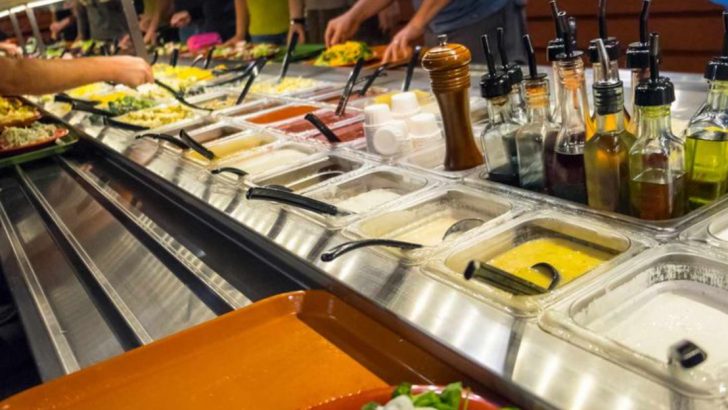Ever wondered what culinary professionals avoid when they hit the all-you-can-eat scene?
Professional chefs develop a sixth sense for spotting risky buffet offerings that might leave you regretting that second plate.
While most buffet items might seem tempting after a long wait in line, knowing which dishes deserve a hard pass—and which ones get a chef’s seal of approval—could save your stomach serious trouble later!
1. Lukewarm Scrambled Eggs
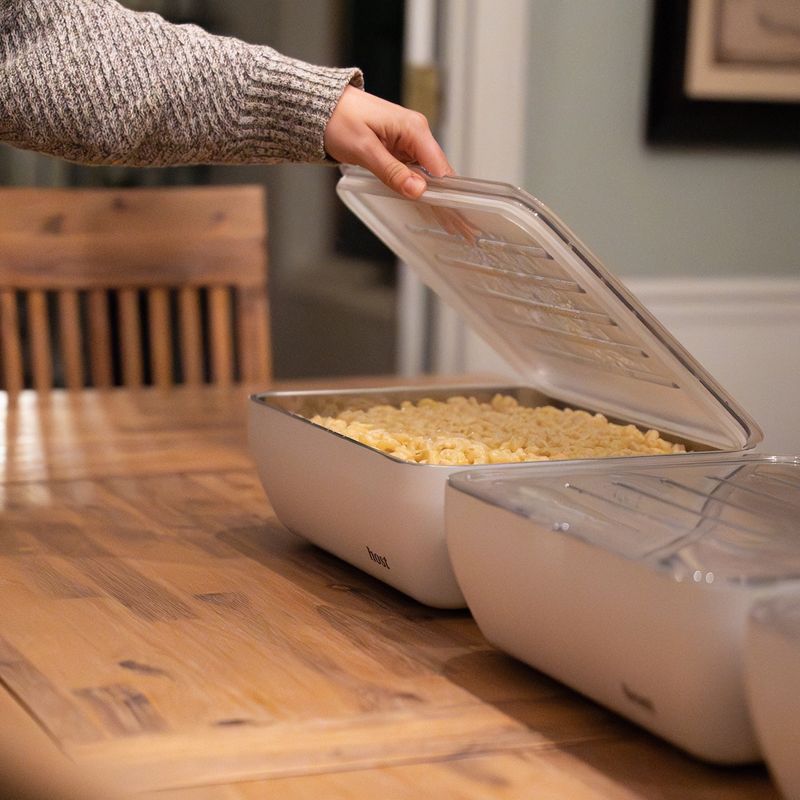
Those yellow mountains of eggs sitting in metal trays? Major red flags for food safety experts! Scrambled eggs need to stay piping hot (above 140°F) to prevent bacterial growth.
Sadly, most buffet setups struggle to maintain proper temperatures, transforming those fluffy breakfast staples into potential food poisoning nightmares. Share this warning with your brunch-loving friends!
2. Seafood That Smells “Fishy”
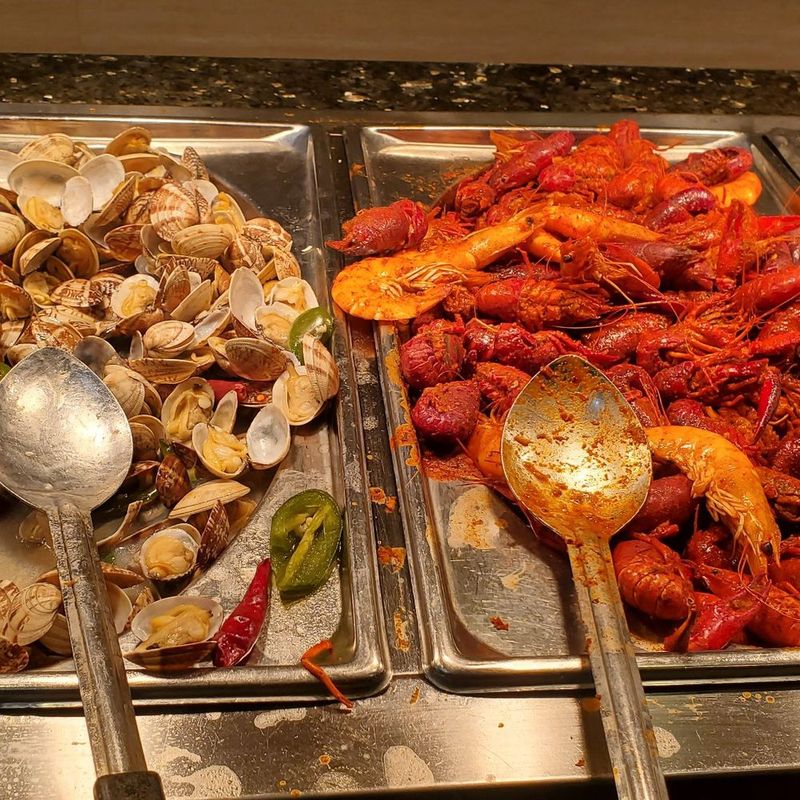
Contrary to popular belief, quality seafood shouldn’t actually smell fishy! If those buffet shrimp or fish fillets are emitting powerful oceanic aromas, they’ve likely overstayed their welcome.
Fresh seafood carries a mild, clean scent reminiscent of the sea—not a fish market at closing time. How many times have we ignored our noses only to regret it later?
3. Hollandaise Sauce Left Out

Though velvety and delicious, hollandaise sauce contains raw egg yolks and requires strict temperature control. When left sitting at room temperature—as frequently happens at buffets—it becomes a bacterial playground within minutes!
If that eggs Benedict has been languishing under heat lamps, maybe opt for something less risky. Would you gamble with raw eggs at home?
4. Rare Roast Beef At The Carving Station
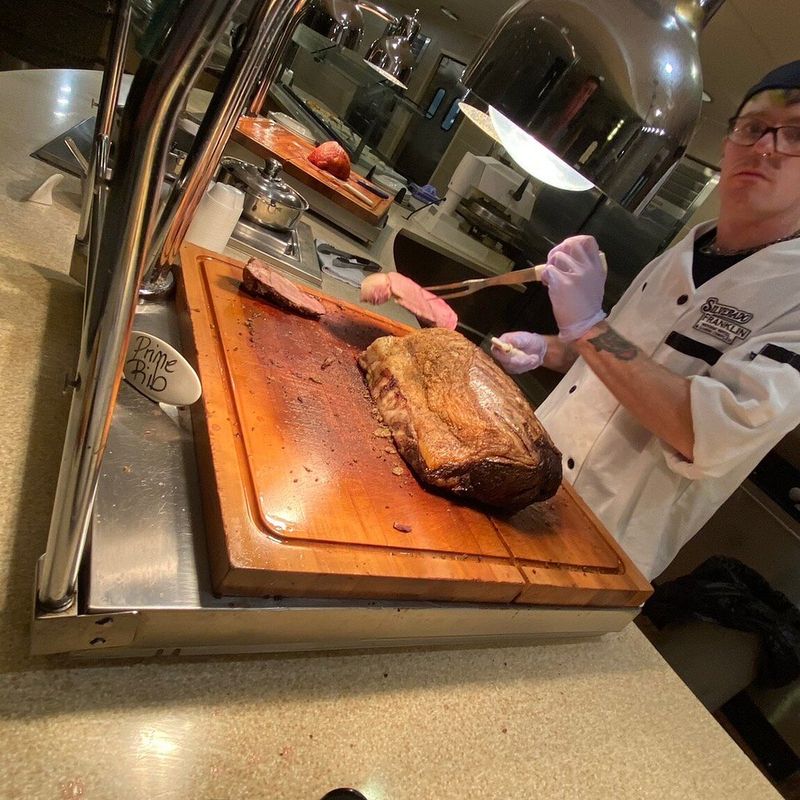
Wait, isn’t rare beef supposed to be fancy? Not when it’s been sitting out for hours! Those gorgeous pink slices require precise temperature control that buffets rarely provide.
The exterior might reach safe temperatures, but the center often lingers in the bacterial danger zone. Medium-well might not be your preference, but it’s certainly preferable to food poisoning!
5. Sushi That’s Been Sitting Too Long
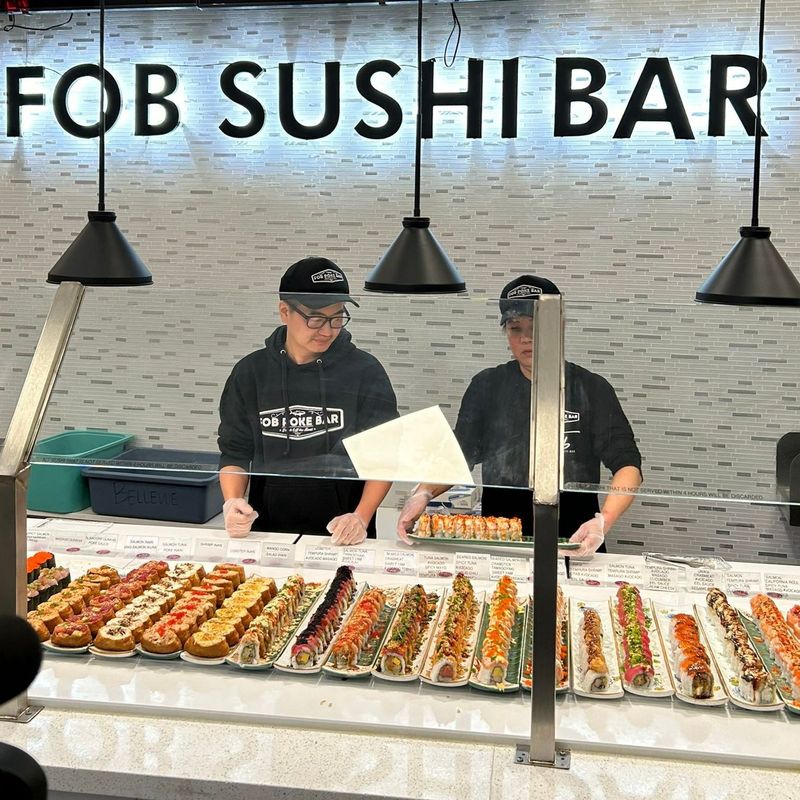
Raw fish demands impeccable freshness and refrigeration! Buffet sushi typically sits at temperatures higher than the required 41°F or below, creating perfect conditions for harmful bacteria.
Those California rolls might look picture-perfect, but if they’ve been artfully arranged for hours, your stomach could pay the price. Pass this nugget of wisdom to your sushi-loving companions!
6. Room-Temperature Cream-Based Dishes
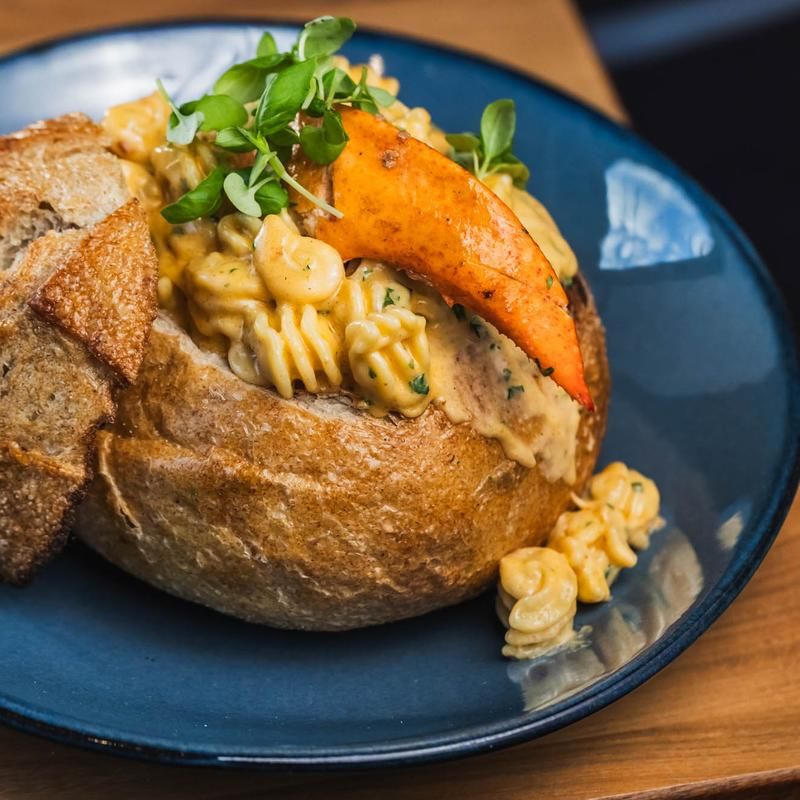
Creamy pasta salads, puddings, and custards transform into bacterial breeding grounds when they hit the danger zone (40°F-140°F). Though impossibly tempting, these dairy-laden delights spoil rapidly at room temperature.
Buffet setups rarely maintain consistent chilling, making these creamy concoctions particularly risky choices. Have you noticed how those desserts sometimes develop that weird skin on top?
7. The First Tray Of Mac And Cheese

Shocking but true – chefs avoid the very first tray of anything at a buffet! Why? That initial batch might have been sitting there since opening time, potentially for hours.
Mac and cheese, with its dairy-heavy composition, becomes particularly suspect when left warming too long. The cheese separates, texture suffers, and worse—bacteria multiply. Wait for the fresh batch instead!
8. Questionable “Fresh” Fruit Display
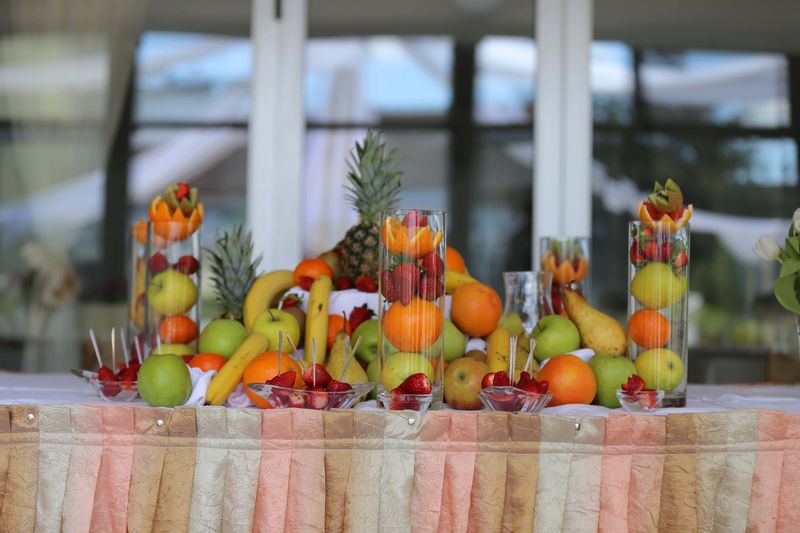
Those glistening watermelon cubes and pineapple chunks might not be as fresh as they appear! Buffet fruit displays often get continually topped off rather than completely replaced.
Older pieces lurk beneath the fresh additions, sometimes sitting for days. Plus, countless hands have rummaged through those berries with communal tongs. When was the last time you saw someone actually washing those serving utensils?
9. Unwatched Chocolate Fountain

Double-dippers, finger-lickers, and small children with questionable hand-washing habits make chocolate fountains a microbiological nightmare! Without staff supervision, these sweet attractions become public health hazards in disguise.
Professional chefs cringe watching patrons return for seconds with already-bitten strawberries. Has anyone else witnessed a child stick their entire hand into that cascading chocolate river?
10. Oysters On The Half Shell
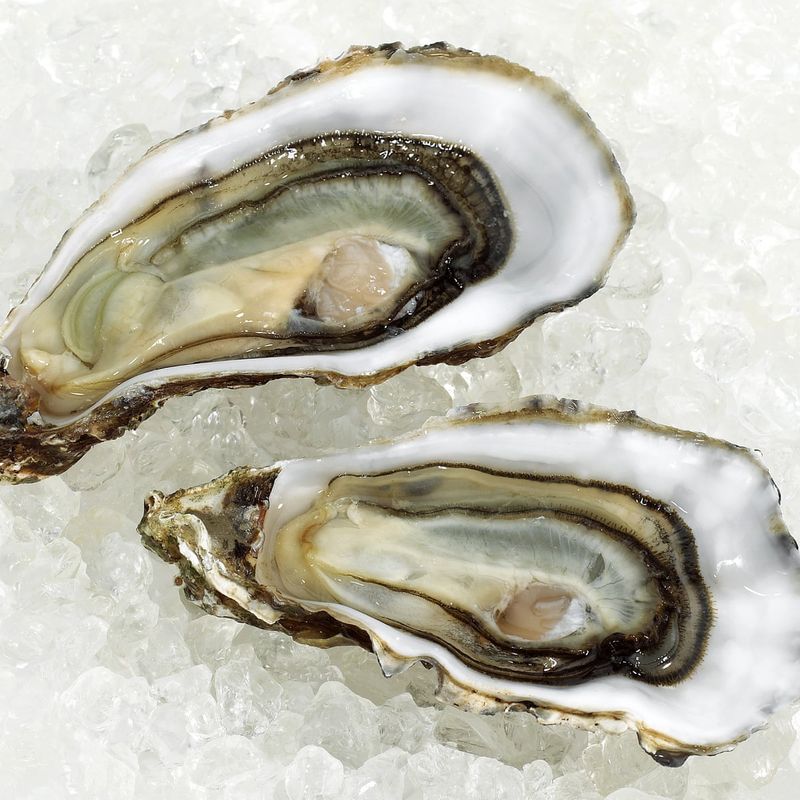
Raw oysters require impeccable handling and temperature control—two things notoriously difficult to maintain at buffets. These delicate bivalves spoil incredibly quickly and can harbor dangerous bacteria when improperly stored.
Even high-end establishments struggle to maintain oyster freshness for extended periods. Considering the potential consequences, maybe save your oyster cravings for dedicated seafood restaurants instead of the all-you-can-eat spread!
11. Chicken Wings Under Heat Lamps
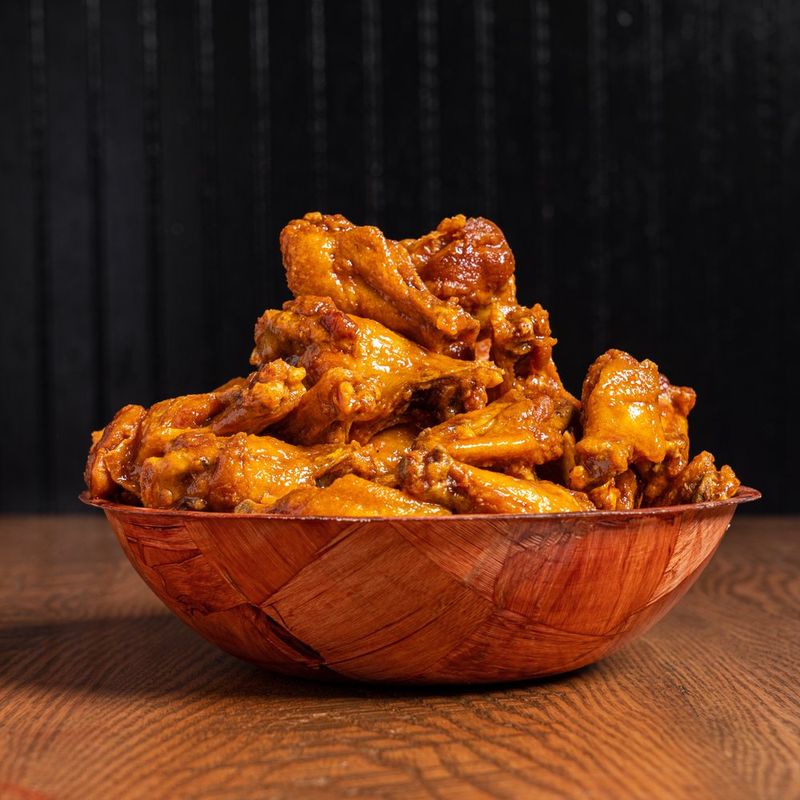
Heat lamps create a deceptive illusion of food safety! While the surface might feel warm, chicken wings often cool to dangerous temperatures in their centers while sitting out.
Those crispy-looking wings might have cycled through multiple temperature fluctuations throughout service. If they appear dry or shriveled, they’ve likely been warming far too long. Would you risk salmonella for a mediocre wing?
12. Self-Serve Ice Cream Machines
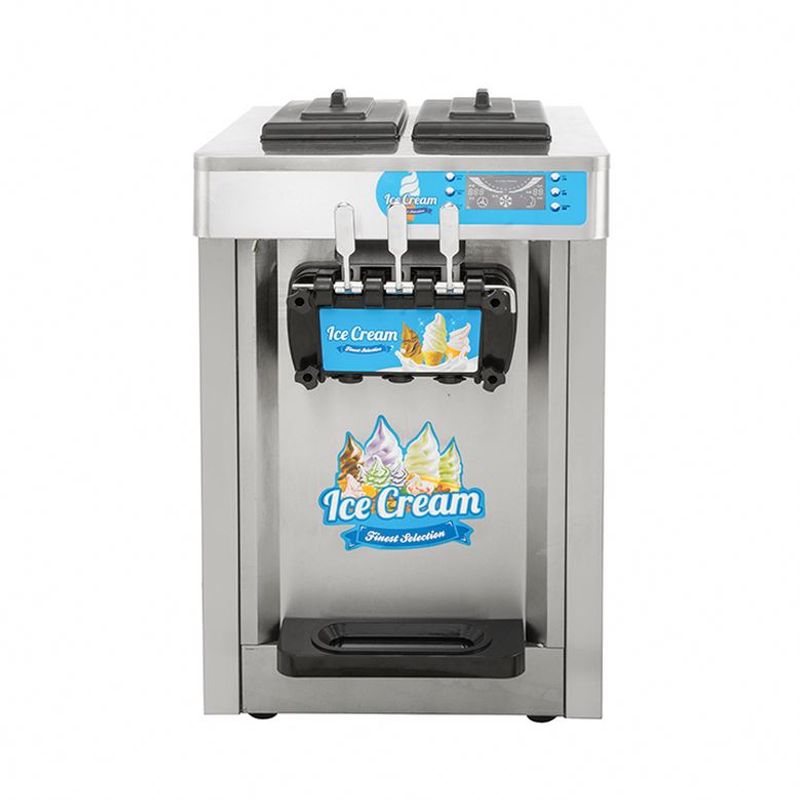
The inside of self-serve ice cream machines can harbor more bacteria than a bathroom doorknob! Without rigorous cleaning protocols (often lacking at buffets), these machines become petri dishes for mold and bacteria.
Watch how many people touch the handles with unwashed hands or accidentally touch the dispensing area. Ever noticed that weird taste that isn’t quite vanilla? There might be an unappetizing explanation!
13. Communal Condiment Stations
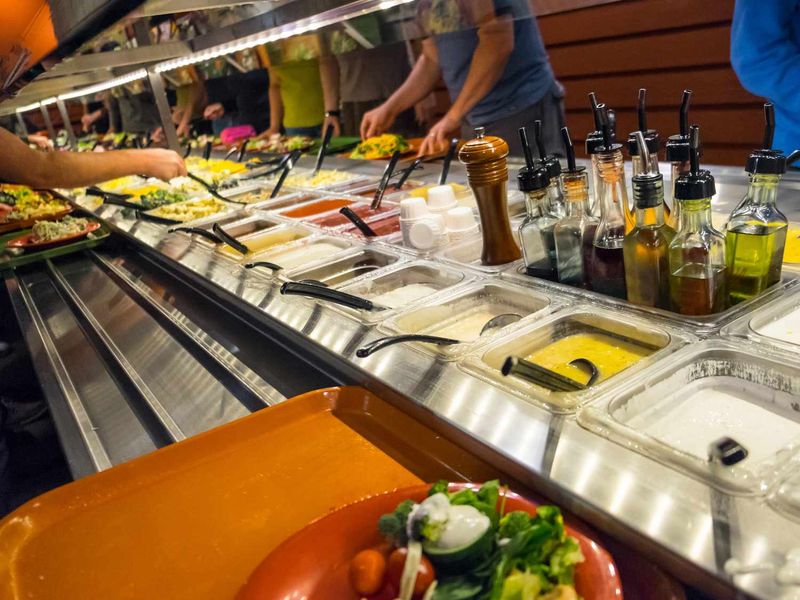
Those open containers of ketchup, mustard, and mayonnaise might as well have a sign reading “bacterial playground”! Left unrefrigerated for hours and accessed by countless hands, these condiments become microbial hotspots.
Mayo in particular turns dangerous quickly at room temperature. How many people have you seen double-dipping or using the wrong end of utensils? Remember this warning next time you reach for that crusty-lidded mayo container!
14. Wilted Salad Bar Greens

Droopy lettuce isn’t just an aesthetic issue—it’s a warning sign! When greens wilt, they’ve likely been sitting out too long and may have entered the temperature danger zone.
Worse yet, those sad-looking vegetables have probably been handled by dozens of people using the same tongs. If the lettuce looks like it’s had a rough day, your stomach might have an even rougher night ahead!
15. CHEF RECOMMENDED: Freshly Made Omelets
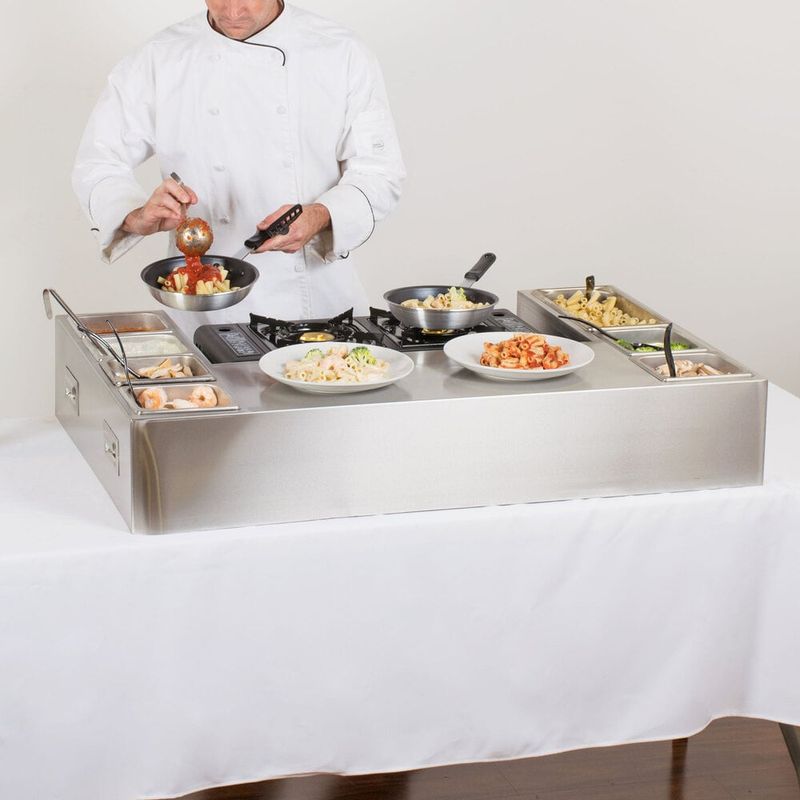
Finally, something chefs actually approve! Made-to-order omelet stations get the professional thumbs-up because eggs go straight from raw to fully cooked right before your eyes.
You control the ingredients, witness the cooking process, and enjoy peak freshness without temperature abuse. Nothing beats watching a skilled cook transform simple ingredients into breakfast perfection. Have you tried requesting hot peppers in yours?
16. CHEF RECOMMENDED: Carved-To-Order Meats
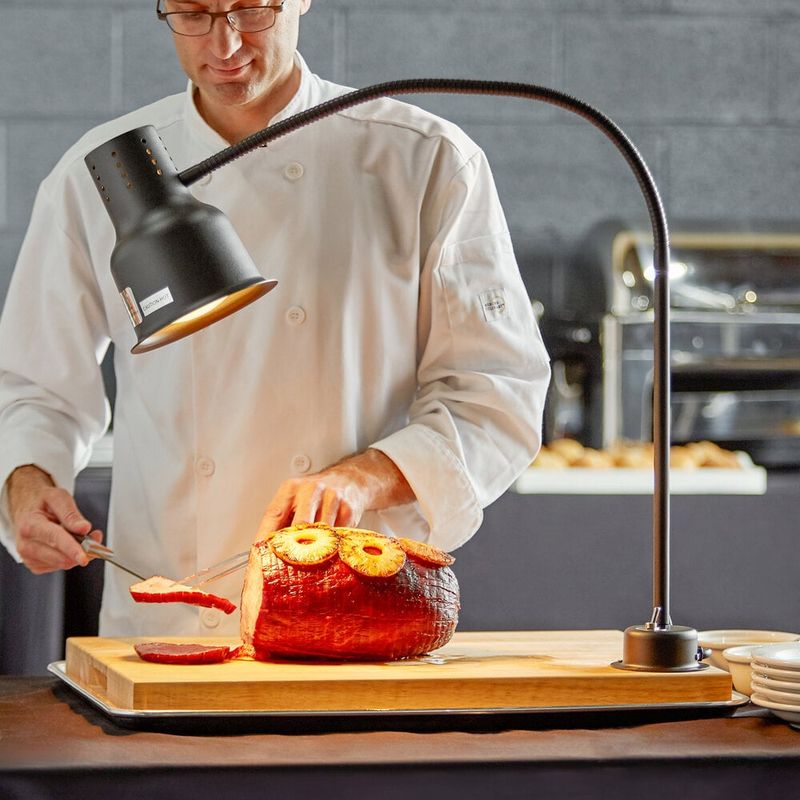
Attended carving stations earn chef approval because large roasts maintain safe internal temperatures more effectively than smaller portions. Plus, you’re getting freshly sliced meat rather than pre-cut pieces sitting in warming trays.
Professional carvers also ensure proper food handling throughout service. When you see that glistening ham or turkey being carved on demand, you’re witnessing buffet dining at its safest!
17. CHEF RECOMMENDED: Dishes In Small Batches

Smart buffets that prepare small batches frequently rather than massive trays rarely replenished get chef approval! These establishments prioritize quality over quantity, ensuring food spends minimal time in the danger zone.
Look for smaller serving vessels that get completely replaced rather than topped off. Frequent kitchen-to-table transitions signal a commitment to freshness that professional chefs respect. Tell your friends to watch for this sign of quality!

